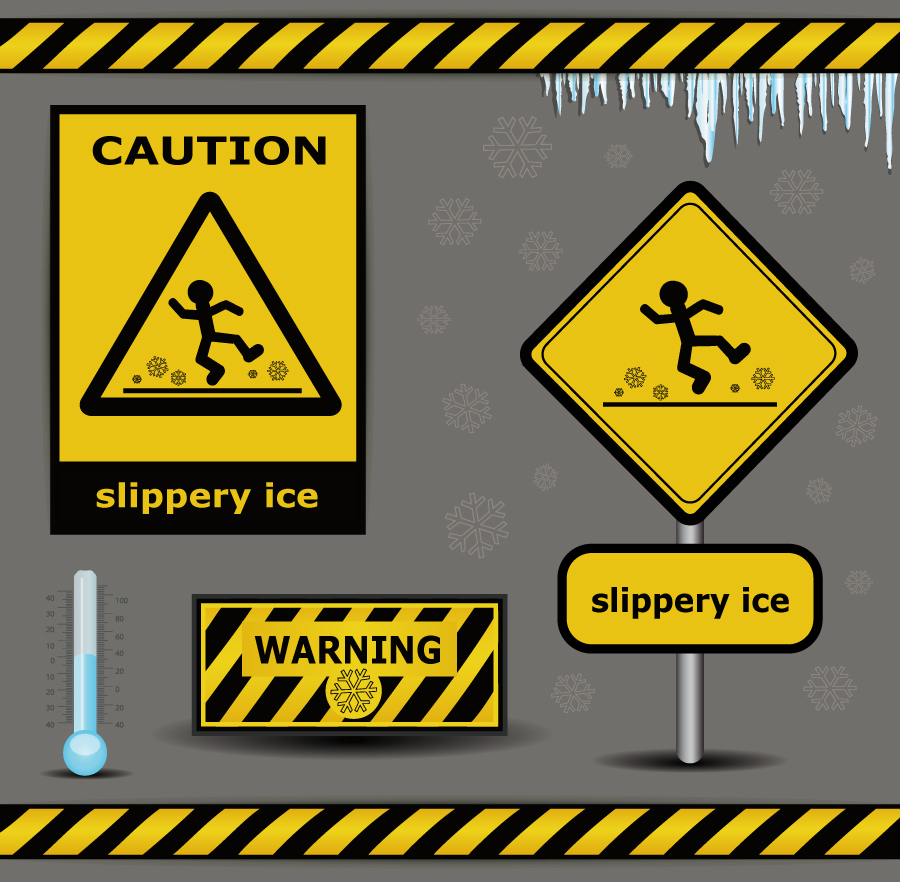In yesterday’s Advisor, we went over the costs and consequences of winter falls in the workplace. Today, we give more precautions you and your employees can take to stay standing on slippery surfaces.
 |
Slipping and sliding means accidents and injuries. Unless they’re ice skating or skiing, you don’t want your employees to be slipping and sliding, especially around your workplace. Yet weather-related slips and falls become a serious hazard because winter conditions often make for wet or icy surfaces outdoors. Even wet leaves or mud can create treacherous walking conditions. Spills and leaks inside can also lead to slips and falls.
You want to do everything you can to prevent these accidents—outside and in. Perhaps the best way to go about it is with awareness training. Short safety meetings in every department for all employees should get people thinking about slipping hazards and taking precautions to prevent falls.
Same-level slips, trips, and falls are occupational hazards that can be found in almost every type of work setting. Download this free survey today to learn more!
Here’s how to create a slip-free zone inside and out.
Inside:
Instruct employees to clean up spills, drips, and leaks immediately (even a little coffee spill on the floor can cause a slip, a fall, and an injury).
Make sure maintenance personnel and other employees put up signs or barriers to warn people when floors are wet, slippery, or otherwise hazardous.
Assign somebody to put down mats on wet days near entryways to help keep floors dry.
Outside:
Sand or salt slippery spots immediately.
Urge employees to wear sensible shoes with nonskid soles on bad weather days.
Instruct employees to wipe their feet when they come in from outside.
Teach employees to walk slowly, take small steps, and slide their feet on wet or slippery surfaces.
Inside and outside:
Encourage employees to report slippery conditions.
- Emphasize the need to fix or report hazardous conditions anywhere inside or outside your facility.
- Instruct employees how, and to whom, to report any slipping hazards they can’t clean up effectively inside.
- Make it easy for them to report any slipping hazards they notice outside on walkways, in parking lots, or anywhere else on your property. That way maintenance can get to the scene quickly and remove the hazard before an employee or visitor to your facility slips and falls.
Remind employees to be extra careful in winter weather.
- E-mail or text reminders or safety tips.
- Place winter safety posters in break rooms and other gathering areas.
- Include winter safety training tips in company newsletters during winter months.
The majority of fall-related injuries occur as a result of falls from same-level walking surfaces, according to the Bureau of Labor Statistics (BLS). Find out more.
Don’t forget that if an employee is injured by a slip and fall, it could mean lost workdays, workers’ compensation, and other medical expenses. If a visitor is injured by a slip and fall outside or inside of your facility, it could mean an expensive lawsuit.
